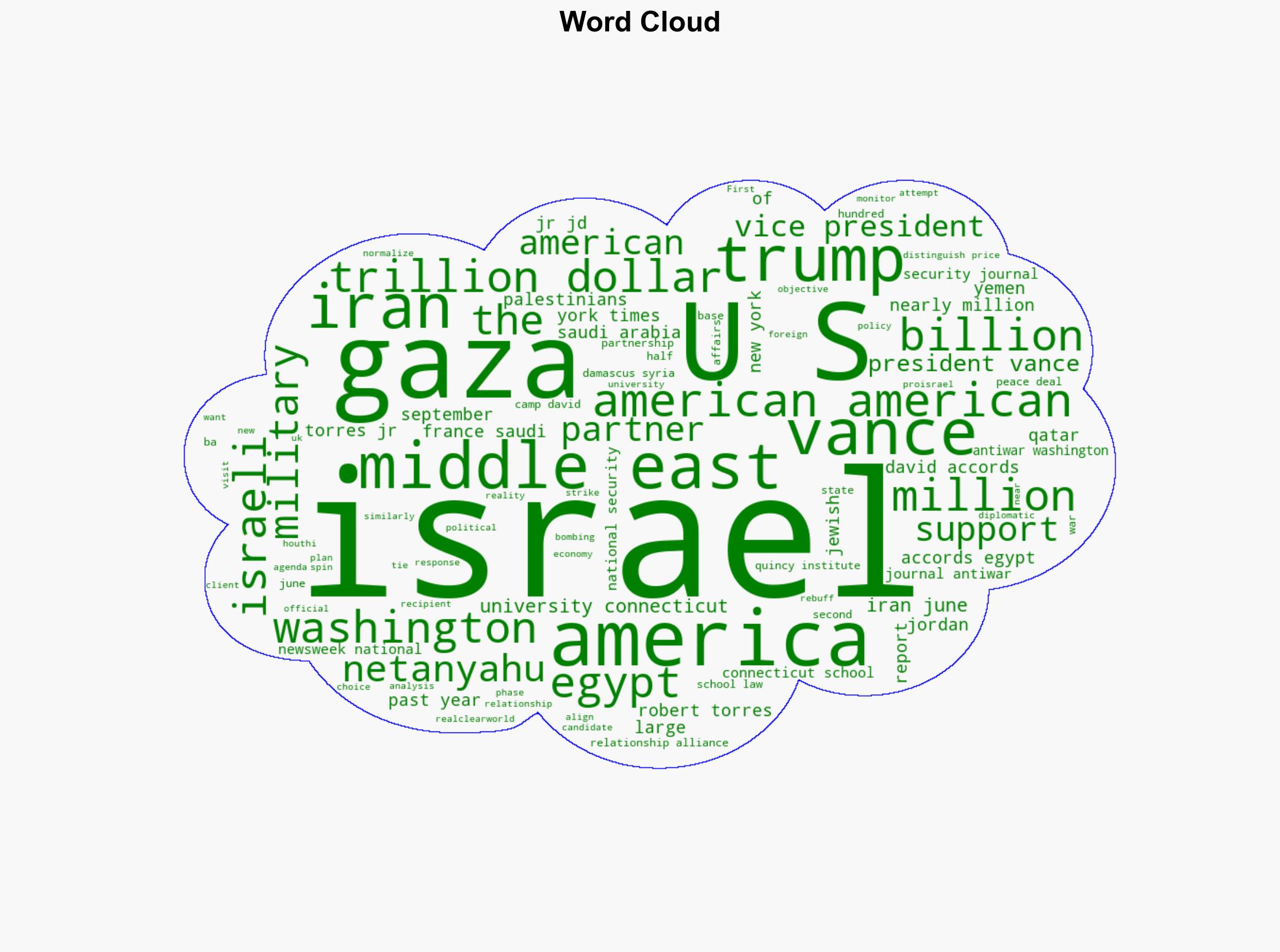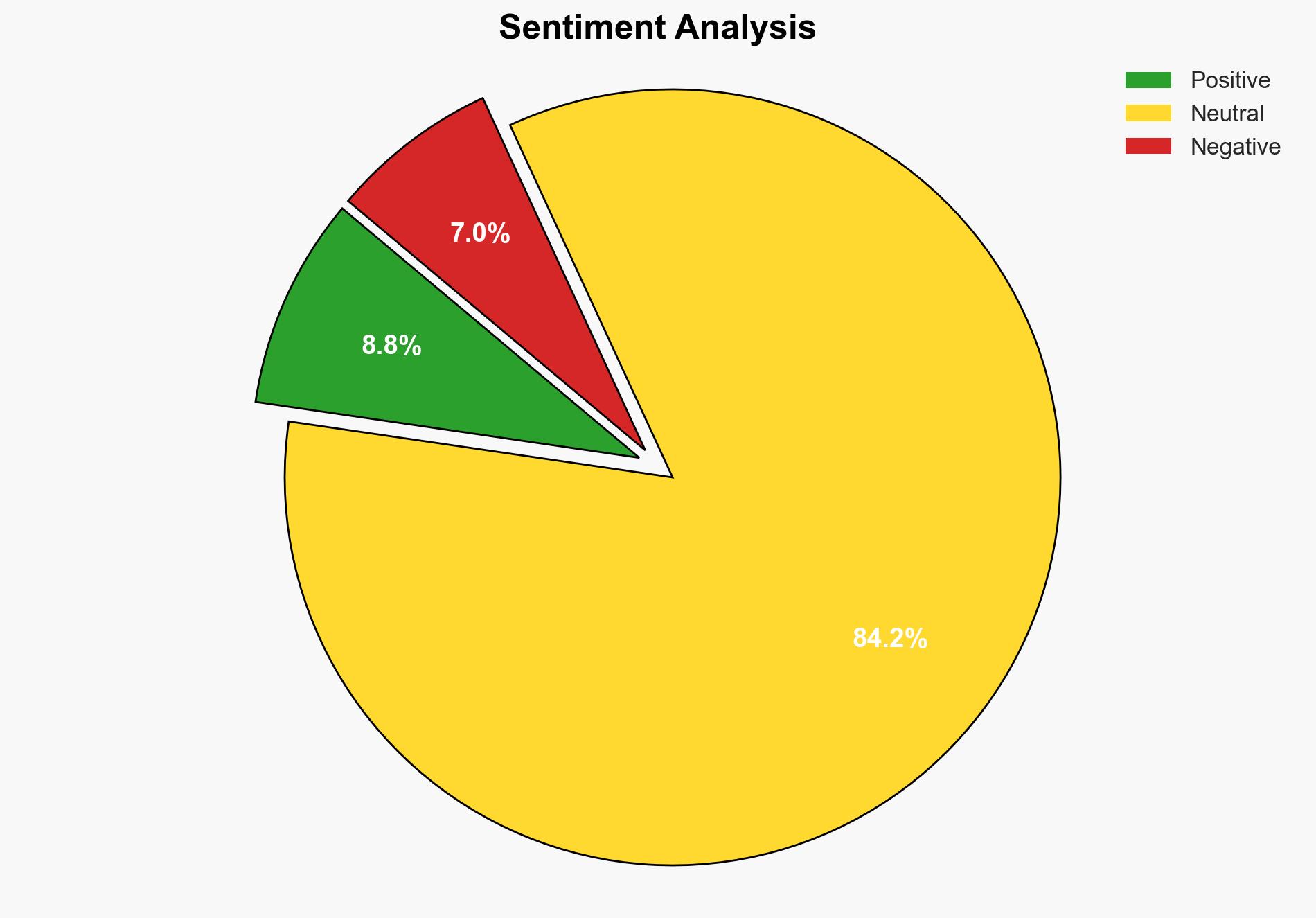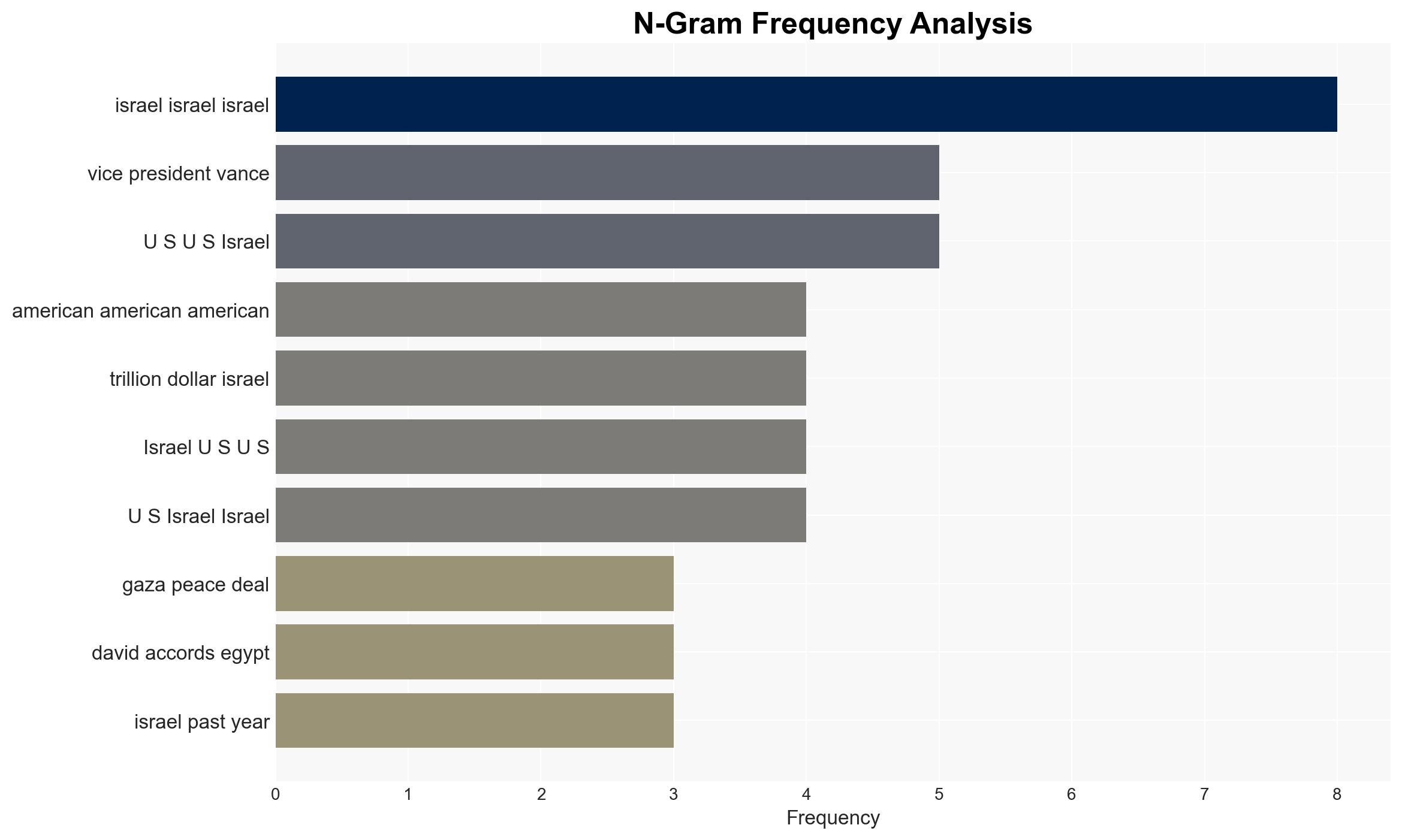Vice President Vance Can Win the America First Youth by Prioritizing Gaza Peace – Antiwar.com
Published on: 2025-11-19
AI-powered OSINT brief from verified open sources. Automated NLP signal extraction with human verification. See our Methodology and Why WorldWideWatchers.
Intelligence Report:
1. BLUF (Bottom Line Up Front)
With a moderate confidence level, the most supported hypothesis is that Vice President Vance’s strategy to prioritize Gaza peace could potentially realign U.S.-Israel relations and appeal to the America First youth demographic. However, this approach carries significant risks of destabilizing existing alliances and provoking regional tensions. Recommended action includes a balanced diplomatic engagement that maintains U.S. strategic interests while addressing domestic political considerations.
2. Competing Hypotheses
Hypothesis 1: Vice President Vance’s focus on Gaza peace will strengthen his political standing among the America First youth by demonstrating a commitment to reducing U.S. involvement in foreign conflicts and reallocating resources domestically.
Hypothesis 2: Prioritizing Gaza peace could backfire, leading to strained U.S.-Israel relations and potentially undermining U.S. influence in the Middle East, thereby weakening Vance’s political position both domestically and internationally.
Hypothesis 1 is more likely given the current political climate and the growing sentiment among younger demographics for reduced foreign entanglements. However, the potential for significant diplomatic fallout makes Hypothesis 2 a considerable risk.
3. Key Assumptions and Red Flags
Assumptions: It is assumed that the America First youth demographic prioritizes foreign policy changes over other domestic issues. It is also assumed that Israel will not significantly alter its strategic posture in response to U.S. policy shifts.
Red Flags: Indicators of deception include potential misrepresentation of Israel’s willingness to cooperate with U.S. policy changes and overestimation of domestic political support for altering U.S.-Israel relations.
4. Implications and Strategic Risks
Potential risks include a diplomatic rift with Israel, leading to decreased regional stability and increased influence of adversarial powers such as Iran. Economically, a shift in U.S. support could impact defense contracts and military aid agreements. Politically, failure to manage these changes could lead to domestic backlash and loss of political capital for Vice President Vance.
5. Recommendations and Outlook
- Actionable Steps: Engage in multilateral discussions with regional allies to ensure a coordinated approach to the Gaza peace initiative. Increase diplomatic efforts to reassure Israel of continued strategic support while advocating for peaceful resolutions.
- Best Scenario: Successful negotiation of a Gaza peace deal that enhances U.S. standing and reduces military expenditures.
- Worst Scenario: Breakdown in U.S.-Israel relations leading to regional conflict and diminished U.S. influence.
- Most-likely Scenario: Incremental progress on peace initiatives with mixed domestic and international reactions.
6. Key Individuals and Entities
Vice President Vance, Prime Minister Netanyahu, President Trump.
7. Thematic Tags
National Security Threats, U.S.-Israel Relations, Middle East Peace Process, America First Policy
Structured Analytic Techniques Applied
- Cognitive Bias Stress Test: Expose and correct potential biases in assessments through red-teaming and structured challenge.
- Bayesian Scenario Modeling: Use probabilistic forecasting for conflict trajectories or escalation likelihood.
- Network Influence Mapping: Map relationships between state and non-state actors for impact estimation.
- Causal Layered Analysis (CLA): Empirical → systemic → worldview → myth layers.
Explore more:
National Security Threats Briefs ·
Daily Summary ·
Support us





